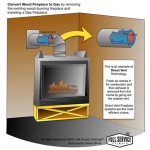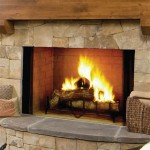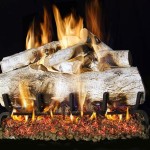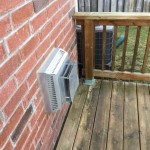Small Wood Stove Fireplace Inserts: Efficient Heating Solutions
Small wood stove fireplace inserts are increasingly popular heating appliances that offer a combination of aesthetic appeal and efficient heating. These inserts are designed to fit directly into existing fireplaces, transforming them from often inefficient, open-hearth systems into closed combustion units capable of providing substantial heat while enhancing the ambiance of a room.
The principle behind a wood stove fireplace insert lies in controlled combustion. Unlike traditional fireplaces where much of the heat escapes up the chimney, these inserts are designed to contain the heat within a firebox and radiate it into the living space. Modern inserts often incorporate advanced technologies such as catalytic combustors or secondary burn systems to maximize efficiency and reduce emissions.
Selecting the appropriate small wood stove fireplace insert requires careful consideration of several factors, including the size of the fireplace opening, the heating requirements of the space, local building codes, and personal preferences. Installation is often best left to qualified professionals who can ensure that the insert is properly connected to the chimney and compliant with safety standards.
Key Features and Benefits of Small Wood Stove Fireplace Inserts
Small wood stove fireplace inserts offer a range of compelling features and benefits that make them a desirable heating option for many homeowners.
Heating Efficiency: One of the primary advantages of a wood stove fireplace insert is its superior heating efficiency compared to traditional fireplaces. Open fireplaces often lose a significant portion of their heat up the chimney, resulting in low net heating efficiency. Inserts, on the other hand, are designed to trap and radiate heat into the room, significantly improving heating performance. This improved efficiency translates into lower fuel consumption and reduced heating costs over time. Many modern inserts boast efficiency ratings of 70% or higher, meaning that a greater percentage of the wood's energy is converted into usable heat.
Improved Air Quality: Modern wood stove fireplace inserts are engineered to burn wood more completely, reducing smoke and particulate emissions. This is often achieved through the use of catalytic combustors or secondary combustion chambers. Catalytic combustors use a coated ceramic honeycomb to lower the ignition temperature of unburned gases, allowing them to burn at a lower temperature and reducing emissions. Secondary combustion systems introduce preheated air into the firebox to burn off unburned gases and smoke, further improving combustion efficiency and reducing emissions. As a result, these inserts contribute to cleaner air both indoors and outdoors compared to older, less efficient wood-burning appliances.
Enhanced Safety: Open fireplaces can pose safety risks due to sparks, embers, and the potential for creosote buildup in the chimney. Wood stove fireplace inserts are enclosed units that significantly reduce these risks. The enclosed firebox prevents sparks and embers from escaping into the room, minimizing the risk of fire hazards. Additionally, the improved combustion efficiency of inserts reduces creosote buildup in the chimney, lessening the likelihood of chimney fires. Many inserts also feature safety features such as automatic shut-off mechanisms in case of over-temperature conditions.
Considerations When Choosing a Small Wood Stove Fireplace Insert
Careful consideration of several factors is crucial when selecting a small wood stove fireplace insert to ensure optimal performance and satisfaction.
Fireplace Size and Compatibility: The dimensions of the existing fireplace opening are paramount in determining the appropriate size and type of insert. Inserts are designed to fit snugly within the fireplace opening, and accurate measurements are essential to ensure a proper fit. Measure the height, width, and depth of the fireplace opening, as well as the dimensions of the fireplace hearth. It is crucial to consider any protrusions or obstructions within the fireplace that may interfere with the installation of the insert. Some inserts are designed to fit a wide range of fireplace sizes, while others are more specific in their requirements. Consult with a qualified installer or manufacturer to determine the best insert for the existing fireplace.
Heating Capacity and Space Requirements: The heating capacity of the insert should be matched to the size of the space being heated. Inserts are typically rated in terms of British Thermal Units (BTUs) per hour, which indicates the amount of heat they can generate. Consider the square footage of the area to be heated, as well as factors such as insulation levels, ceiling height, and the number of windows and doors. A larger space will require an insert with a higher BTU rating. Over-sizing an insert can lead to overheating and discomfort, while under-sizing can result in insufficient heating. Consult a heating professional to determine the appropriate BTU rating for the specific heating needs.
Emissions Standards and EPA Certification: The United States Environmental Protection Agency (EPA) sets emissions standards for wood-burning appliances to reduce air pollution. EPA-certified inserts meet stringent emissions requirements and are designed to burn wood more cleanly. Look for inserts that are EPA-certified and labeled accordingly. In some areas, local regulations may require the use of EPA-certified appliances. Using a non-certified insert may result in fines or penalties. Choosing an EPA-certified insert not only helps to protect the environment but also ensures that the appliance operates efficiently and effectively.
Installation and Maintenance of Small Wood Stove Fireplace Inserts
Proper installation and regular maintenance are essential for ensuring the safe and efficient operation of a small wood stove fireplace insert.
Professional Installation: Installation of a wood stove fireplace insert is typically best left to qualified professionals who have the necessary expertise and experience. Improper installation can lead to safety hazards such as carbon monoxide poisoning, chimney fires, and structural damage. A professional installer will ensure that the insert is properly connected to the chimney, that the chimney is in good condition, and that the insert meets all applicable building codes and safety standards. The installer can also provide guidance on the proper operation and maintenance of the insert.
Chimney Inspection and Cleaning: Regular chimney inspections and cleanings are crucial for preventing chimney fires and ensuring proper venting of combustion gases. Creosote, a flammable byproduct of wood burning, can accumulate in the chimney over time, increasing the risk of a chimney fire. The National Fire Protection Association (NFPA) recommends that chimneys be inspected at least once a year and cleaned as needed. A qualified chimney sweep can inspect the chimney for creosote buildup, structural damage, and other potential problems. The chimney sweep can also clean the chimney to remove creosote and other debris, reducing the risk of a chimney fire.
Regular Maintenance and Inspection: In addition to chimney maintenance, regular maintenance and inspection of the insert itself are important for ensuring its safe and efficient operation. Inspect the door gaskets, air controls, and other components of the insert for wear and tear. Replace worn or damaged parts as needed. Clean the firebox regularly to remove ash and debris. Follow the manufacturer's instructions for proper operation and maintenance. Consider scheduling an annual inspection by a qualified technician to ensure that the insert is functioning properly and safely.
Ultimately, small wood stove fireplace inserts offer a significant upgrade to traditional fireplaces, providing improved heating efficiency, reduced emissions, and enhanced safety. By carefully considering the factors outlined above and ensuring proper installation and maintenance, homeowners can enjoy the warmth and ambiance of a wood-burning fire while minimizing its environmental impact and maximizing its long-term performance.

Small Flush Hybrid Fyre Wood Insert All Season Spas And Stoves

Napoleon S25i Wood Stove Insert More L Fire Pit Surplus

Small Wood Insert Alterra Ci1150 Regency Fireplace S

Buy Regency Classic Wood Insert I1150 Or In

Wood Fireplace Inserts B D Stoves

Century Heating Small Wood Burning Insert Cw2500

Century Heating Extra Small Wood Stove S245e

Napoleon S20i Small Wood Burning Insert North Country Fire

Ventis Hei170 Wood Burning Insert Rockford Chimney

Napoleon S20i Small Wood Burning Insert North Country Fire








